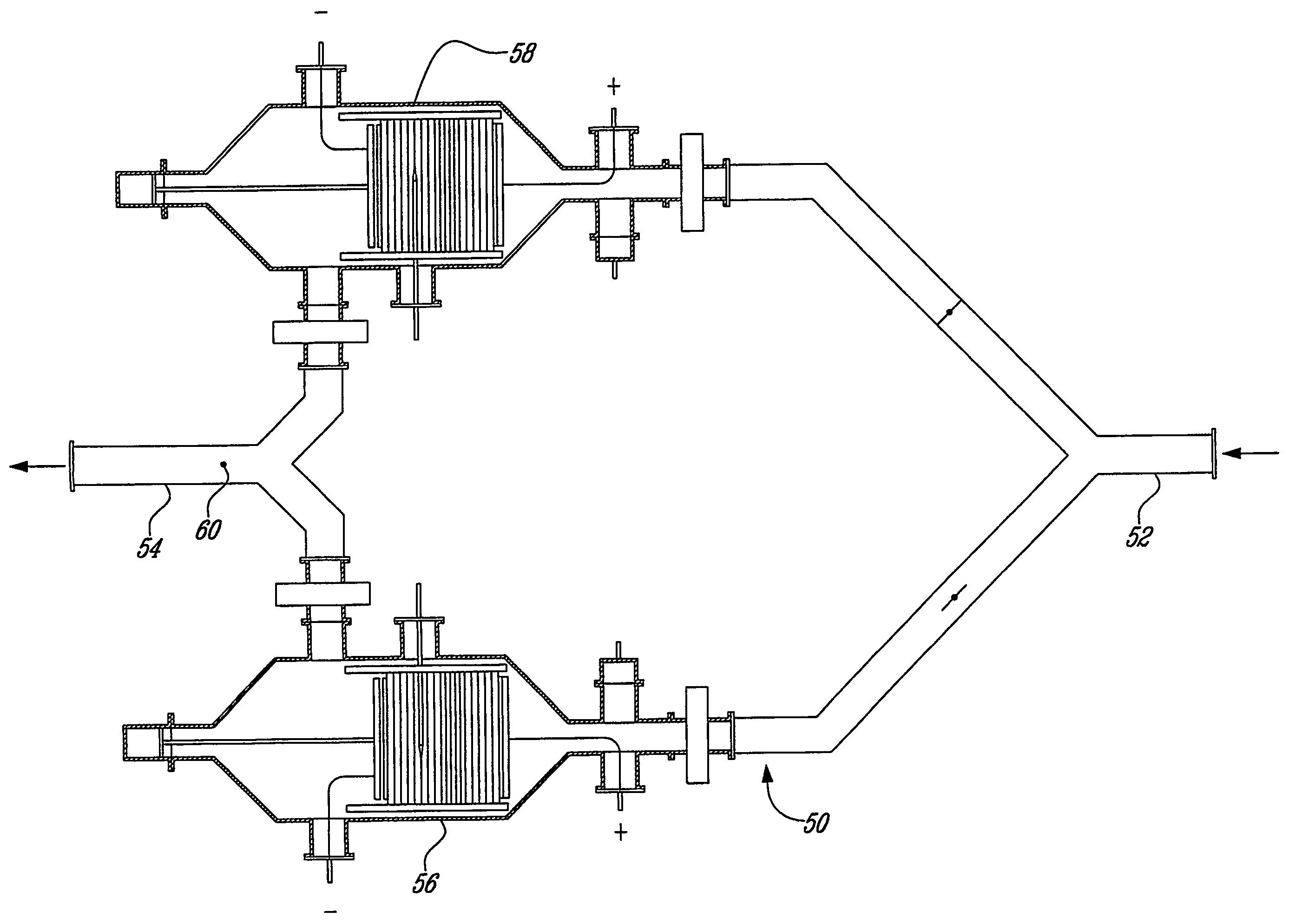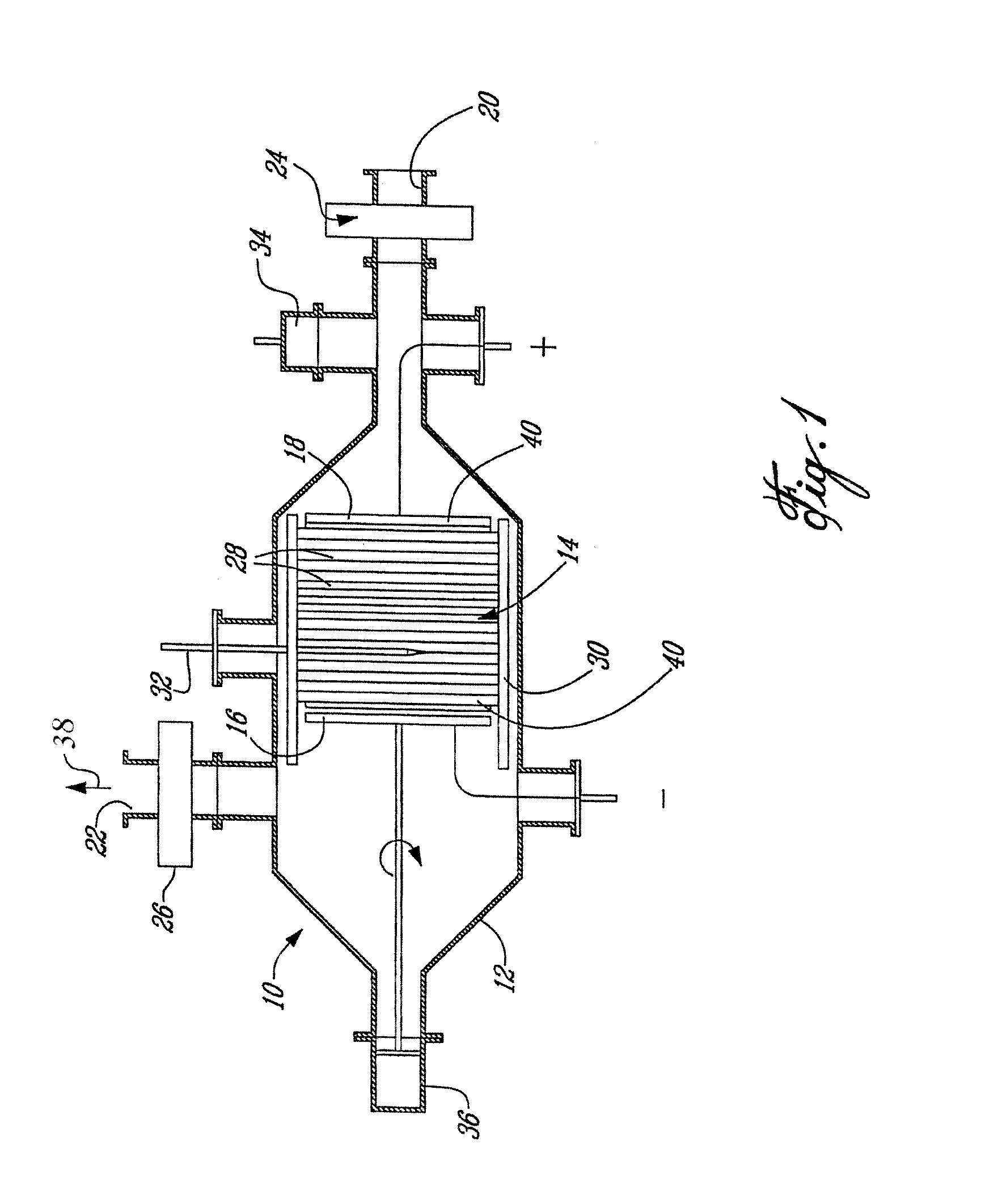Adsorption of contaminants from gaseous stream and in situ regeneration of sorbent
a technology of in situ regeneration and sorbent, which is applied in the direction of filtration separation, combustible gas purification/modification, and separation processes, etc., can solve the problems of reducing the adsorption capacity of bonded carbon, labor-intensive, and potentially hazardous and costly procedures, and the replacement period of spent carbon
- Summary
- Abstract
- Description
- Claims
- Application Information
AI Technical Summary
Benefits of technology
Problems solved by technology
Method used
Image
Examples
Embodiment Construction
[0034]a) Adsorption and Desorption
[0035]The invention contemplates adsorption of contaminant from a gaseous stream bearing the contaminant on an activated carbon cloth material which is electrically conductive and resiliently compressible.
[0036]The invention also contemplates desorption of the contaminant from the cloth material loaded with adsorbed contaminant.
[0037]The adsorption is typically carried out at ambient temperatures of 10 to 30° C., more especially about 20° C. by flowing a gaseous stream bearing the contaminant through the activated cloth material; the contact time for adsorption is typically less than 1 second and more especially less than 0.1 second.
[0038]The contaminant may be a useful material which may be recovered for re-use in a subsequent step, for example, solvent which accumulates in the atmosphere in industrial premises; or it may be a noxious or non-useful material which is to be collected for disposal. In general, the contaminants will be organic substanc...
PUM
| Property | Measurement | Unit |
|---|---|---|
| temperature | aaaaa | aaaaa |
| temperatures | aaaaa | aaaaa |
| temperatures | aaaaa | aaaaa |
Abstract
Description
Claims
Application Information
 Login to View More
Login to View More - R&D
- Intellectual Property
- Life Sciences
- Materials
- Tech Scout
- Unparalleled Data Quality
- Higher Quality Content
- 60% Fewer Hallucinations
Browse by: Latest US Patents, China's latest patents, Technical Efficacy Thesaurus, Application Domain, Technology Topic, Popular Technical Reports.
© 2025 PatSnap. All rights reserved.Legal|Privacy policy|Modern Slavery Act Transparency Statement|Sitemap|About US| Contact US: help@patsnap.com



